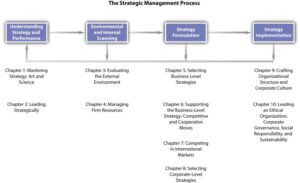
Contactless dining trends are revolutionizing the way we experience meals in restaurants, combining convenience with cutting-edge technology. As consumers seek safer and more efficient dining options, restaurants have rapidly adapted to these changes, dramatically shifting their operations.
This evolution is not only a response to the challenges posed by recent global events but also a reflection of ongoing advancements in technology that make dining more seamless and enjoyable. From QR codes to mobile payments, the landscape of dining has been transformed, prioritizing customer safety and satisfaction.
Contactless Dining Overview
Contactless dining has emerged as a pivotal trend in the restaurant industry, reshaping the dining experience for both customers and businesses. This concept revolves around minimizing physical interactions between staff and diners, largely facilitated by technology. The significance of contactless dining lies in its ability to enhance convenience, improve safety, and streamline operations in modern restaurants.Technological advancements have played a crucial role in enabling contactless dining solutions.
From mobile ordering apps to QR code menus and contactless payment systems, these innovations have made it easier for customers to enjoy their meals without the need for physical menus or cash transactions. The COVID-19 pandemic acted as a catalyst for the rapid adoption of contactless dining practices, as restaurants sought to uphold health guidelines while maintaining customer satisfaction.
Business Innovation in Contactless Dining
Innovative technologies are enhancing the contactless dining experience, creating a seamless environment for guests. Key advancements include:
- Mobile Apps: These allow customers to browse menus, place orders, and make payments directly from their smartphones, reducing wait times and crowding at the counter.
- QR Codes: Restaurants use QR codes to provide digital menus accessible via smartphones, minimizing the need for physical menus.
- Self-Service Kiosks: These kiosks enable guests to order and pay without staff assistance, streamlining the ordering process.
Numerous restaurants have successfully implemented these contactless solutions. For instance, many fast-casual chains have adopted QR code menus, significantly reducing the time spent on order processing. Additionally, fine dining establishments have begun to integrate mobile payment solutions to enhance the guest experience while ensuring safety.Contactless dining contributes to broader business innovation by encouraging restaurants to rethink their operational strategies. This shift not only improves efficiency but also enhances customer experiences, driving loyalty and repeat business.
International Business Perspectives
Contactless dining trends vary significantly across different countries, influenced by cultural acceptability and technological readiness. For example, Asian countries, particularly Japan and South Korea, have long integrated technology into dining, making the transition to contactless dining smoother. In contrast, Western nations have seen a more gradual adoption, primarily accelerated by the pandemic.Cultural factors also play a crucial role in how restaurants worldwide embrace contactless solutions.
Regions with high levels of tech-savviness readily accept mobile payments and digital menus, while areas with limited internet access may face challenges in implementation.International restaurants encounter hurdles such as varying regulatory environments and customer preferences. Some markets may resist digital solutions due to cultural habits around dining, requiring tailored approaches to encourage adoption.
Interview with Industry Experts
Gathering insights from restaurant managers about their experiences with contactless dining can reveal valuable perspectives. Key questions to pose during interviews may include:
- What challenges did you face when implementing contactless dining solutions?
- How have your customers responded to the shift towards contactless methods?
- What technologies have proven most effective in enhancing the dining experience?
Common themes that arise from these discussions often highlight the importance of customer education and staff training in the successful adoption of new technologies. Insights from industry leaders indicate that transparency and clear communication can help bridge the gap between traditional dining experiences and modern contactless solutions.
Job Search Techniques for the Restaurant Sector
The demand for tech-savvy employees in the restaurant sector is significant, especially as contactless dining becomes the norm. Job seekers should focus on developing skills in areas such as mobile technology, customer service, and digital payment systems. Tips for job seekers include:
- Highlight experience with technology in dining settings on resumes.
- Develop an understanding of the latest contactless dining trends.
- Showcase adaptability and willingness to learn new systems in cover letters.
Emerging roles related to contactless dining include positions in technology management, digital marketing for dining experiences, and customer service representatives trained in navigating new systems. These positions are vital in ensuring that restaurants operate smoothly in a tech-driven landscape.
Business Management Strategies
Implementing contactless dining solutions requires effective management strategies. Key approaches include:
- Assessing Technology Needs: Evaluate which technologies best fit the restaurant’s concept and customer base.
- Staff Training: Ensure employees are well-trained in using new technologies and understand the importance of maintaining personal customer service alongside tech solutions.
- Customer Feedback: Regularly solicit feedback to improve the contactless dining experience based on customer perceptions.
Staff training is paramount in the successful integration of contactless technologies. In addition to technical training, fostering a customer-first mindset among employees can help maintain a balance between technology and personal service.
Marketing Direct Techniques
Marketing strategies for promoting contactless dining options must emphasize customer convenience and safety. Campaigns can focus on the benefits of contactless solutions, such as reduced wait times and enhanced hygiene. Successful marketing campaigns often utilize social media platforms to reach a broader audience.Case studies of effective marketing include:
- Restaurants that create engaging social media content showcasing their contactless dining experience.
- Promotions that incentivize customers to try contactless options, such as discounts on mobile orders.
- Collaborations with influencers to highlight the convenience and safety aspects of contactless dining.
Business Networking Opportunities
Networking is essential for restaurant owners to share best practices regarding contactless dining. Industry events focused on technology in dining provide valuable platforms for exchanging ideas and experiences.Examples of networking opportunities include:
- Conferences that bring together restaurateurs and tech providers.
- Local business meetups aimed at discussing innovation in dining.
- Online forums and social media groups for restaurant owners to share insights.
Collaborative efforts can significantly enhance the adoption of contactless solutions, as sharing successful practices can lead to improved operational efficiencies across the industry.
Business Outsourcing for Technology Solutions
Outsourcing technology needs for contactless dining can be a strategic move for restaurants looking to enhance their offerings without heavy investment in in-house solutions. Service providers specializing in contactless solutions can offer expertise and resources that may not be available internally.Examples of service providers include companies offering:
- Mobile payment solutions tailored for the restaurant industry.
- Cloud-based management systems for ordering and inventory.
- Consulting services to implement contactless technologies effectively.
The financial implications of outsourcing versus in-house implementation include factors such as initial costs, ongoing maintenance expenses, and the potential for increased efficiency and customer satisfaction.
Business Presentation Techniques
Presenting contactless dining initiatives to stakeholders requires clear communication and compelling visuals. Guidelines for effective presentations include:
- Start with an overview of the benefits of contactless dining for both customers and the business.
- Utilize data and case studies to illustrate successful implementations.
- Highlight the return on investment and potential for increased customer loyalty.
Key data points to include are customer satisfaction rates, operational efficiencies gained, and any positive financial metrics observed post-implementation. Thoughtful presentations can garner support for adopting contactless dining strategies.
Business Productivity in Contactless Dining
Adopting contactless dining options often leads to notable productivity improvements in restaurant operations. Streamlined ordering processes reduce wait times and allow staff to focus on customer engagement rather than manual order-taking.Metrics to measure productivity impacts post-implementation include:
- Average order processing time.
- Customer turnover rates during peak hours.
- Staff productivity levels measured through task completion times.
By assessing these metrics, restaurants can identify areas for further enhancement and ensure that contactless dining contributes positively to overall operational efficiency.
Restaurant Industry Trends
The restaurant industry is experiencing broader trends linked to contactless dining, such as increased automation and a focus on sustainability. Contactless solutions are not just about convenience; they align with movements toward environmentally friendly practices, as they reduce the need for printed materials and streamline operations.Predictions suggest that the future of dining will increasingly integrate technology, with further advancements in automation, AI-driven customer interactions, and enhanced guest experiences through personalized services.
As customer expectations evolve, restaurants must adapt to keep pace with these emerging trends.
Resumes and Cover Letters for Technology Roles

Candidates seeking roles focused on contactless dining technologies should tailor their resumes to highlight relevant skills and experiences. Templates for resumes should emphasize:
- Technical proficiency in mobile apps and contactless payment systems.
- Experience in customer service roles that utilized technology.
- Adaptability to new technologies and willingness to learn.
Cover letters should demonstrate an understanding of the evolving dining landscape and express how the candidate can contribute to enhancing the contactless dining experience through technology.
Business Retail Impact
Contactless dining trends significantly influence retail partnerships with restaurants. Retail brands are beginning to adopt dining features that enhance customer experiences, such as in-store dining options with fully integrated contactless payment systems.Examples of retail brands embracing contactless dining include:
- Grocery stores offering meal kits with mobile ordering and pickup options.
- Convenience stores integrating quick-service dining experiences with contactless payments.
- Brands collaborating with restaurants to create unique dining experiences in-store.
Cross-industry collaborations focused on contactless experiences can create synergies that benefit both retailers and restaurateurs, enhancing customer engagement.
Risk Management in Contactless Dining
Restaurants adopting new technologies in dining face various risks, including data security and compliance with health regulations. Establishing robust risk management strategies is crucial to mitigate these challenges.Strategies for mitigating risks related to customer data security include:
- Implementing strong cybersecurity measures to protect sensitive information.
- Training staff on the importance of data privacy.
- Regularly auditing systems for vulnerabilities.
Compliance with health regulations is equally important, necessitating a thorough understanding of local laws governing contactless transactions and health safety standards.
Business Sales Strategies
Contactless dining can enhance upselling and cross-selling opportunities through targeted promotions and personalized recommendations. Training strategies for sales teams should focus on leveraging contactless systems to maximize sales potential.Examples of successful sales approaches in this context include:
- Offering bundled meal deals during the ordering process.
- Utilizing customer data to suggest menu items based on previous orders.
- Implementing loyalty programs that reward repeat customers for contactless orders.
These strategies not only boost sales but also enhance customer satisfaction by streamlining the ordering experience.
Sales Management Challenges
Transitioning to contactless dining presents challenges in managing sales teams, particularly in ensuring all staff are on board with new processes. Motivating teams during this shift is crucial for maintaining morale and productivity.Strategies for overcoming these challenges include:
- Providing ongoing training and support to ease the transition to contactless systems.
- Recognizing and rewarding staff who excel in adapting to new sales processes.
- Setting clear performance metrics to measure success in the new environment.
Implementing these approaches can help ensure that sales management effectively navigates the transition to contactless dining.
Sales Teleselling Techniques
Teleselling plays a crucial role in promoting contactless dining services, allowing restaurants to reach potential customers directly. Best practices for conducting teleselling campaigns focused on new dining options include:
- Crafting clear, engaging scripts that highlight the benefits of contactless dining.
- Training staff on effective communication techniques to address customer concerns.
- Utilizing follow-up strategies to maintain customer engagement post-contact.
Effective teleselling conversations should focus on understanding customer needs and presenting contactless solutions as the ideal option for modern dining experiences.
Sales Training for Contactless Solutions
Training staff on selling contactless dining experiences is essential for maximizing the benefits of new technologies. Key topics to cover in sales training include:
- Understanding the features and benefits of contactless solutions.
- Role-playing scenarios to practice customer interactions.
- Identifying opportunities for upselling within the contactless framework.
Role-playing exercises can enhance staff confidence and ensure they are well-prepared to promote contactless dining effectively.
Business Security Measures

Ensuring the security of contactless dining systems is critical for maintaining customer trust. Necessary security measures include:
- Implementing encryption protocols for sensitive data transmission.
- Regularly updating software to address potential vulnerabilities.
- Establishing strict access controls and user authentication processes.
Cybersecurity threats relevant to the restaurant industry require continuous monitoring and adaptation to safeguard customer data effectively.
Small Business Strategies
Small restaurants have unique advantages in implementing contactless dining solutions quickly and efficiently. Strategies for achieving this on a budget include:
- Utilizing free or low-cost technology solutions initially to test the waters.
- Leveraging social media for marketing contactless options at minimal costs.
- Focusing on customer education to encourage the adoption of new systems.
Case studies of small businesses successfully leveraging contactless dining often highlight the importance of agility and responsiveness in a changing market.
Solo Professionals in the Restaurant Industry
Solo entrepreneurs can harness contactless dining solutions to enhance their offerings and streamline operations. Marketing solo dining experiences through contactless options allows for greater flexibility and customer engagement.Insights from successful solo professionals include:
- Utilizing social media platforms to showcase unique dining experiences that highlight tech integration.
- Offering exclusive promotions for contactless orders to attract new customers.
- Building a personal brand that emphasizes innovation and customer-centric approaches.
Sharing success stories of solo professionals implementing contactless dining can inspire others in the industry to embrace technology.
Strategic Planning for Contactless Dining
Creating a strategic plan for introducing contactless dining involves thorough market research and a clear understanding of customer needs. A template for strategic planning should include:
- Assessing current technology capabilities and identifying gaps.
- Setting measurable objectives for the contactless dining experience.
- Outlining an implementation timeline and necessary training protocols.
Evaluating success metrics is crucial for refining contactless dining strategies and ensuring alignment with broader business goals.
Team Building in the Context of Contactless Dining
Team-building activities centered around technology adaptation can enhance staff cohesion as they transition to contactless solutions. Methods for fostering a collaborative environment include:
- Hosting workshops focused on technology training and best practices.
- Encouraging team discussions on customer feedback regarding contactless dining experiences.
- Organizing social events that promote team bonding and shared learning.
Positive team-building outcomes can lead to improved morale and a more effective implementation of contactless dining initiatives.
Venture Capital for Restaurant Innovation
Funding opportunities for startups focusing on contactless dining technologies are increasingly available as investors recognize the potential for growth in this sector. Presenting contactless dining business ideas to investors requires a compelling narrative that Artikels market needs and potential returns.Success stories of restaurants funded through venture capital illustrate the importance of innovation. Examples include:
- Startups developing unique mobile solutions that enhance the dining experience.
- Companies offering comprehensive contactless systems that integrate seamlessly with existing restaurant operations.
- Innovative concepts that leverage data analytics to improve customer engagement.
The growing interest in tech-driven dining solutions is reshaping the landscape for restaurant funding.
Workplace Communication in Transitioning to Contactless Dining
Effective communication strategies are vital for teams during the transition to contactless dining. A communication plan should include:
- Regular updates on the implementation process and timelines.
- Open forums for staff to voice concerns and share feedback.
- Clear guidelines on new protocols and expectations for service delivery.
Avoiding communication pitfalls, such as lack of transparency or insufficient training, is crucial for a smooth transition to contactless dining.
Workplace Safety in Contactless Dining
Contactless dining contributes to workplace safety for both staff and customers by minimizing physical contact. Safety protocols accompanying contactless practices should include:
- Regular sanitization of surfaces where interactions may occur.
- Clear signage guiding customers on using contactless systems.
- Training staff on safety measures and customer interaction protocols.
Maintaining a safe environment while utilizing technology is essential for building customer trust and ensuring satisfaction in the dining experience.
Last Recap
In conclusion, the rise of contactless dining trends encapsulates the intersection of technology and hospitality, providing both challenges and opportunities for the restaurant industry. As businesses continue to innovate and adapt, the future of dining looks promising, offering enhanced experiences that prioritize customer safety while maintaining the joy of sharing a meal.
FAQ Overview
What is contactless dining?
Contactless dining refers to dining experiences where customers can order, pay, and interact with the restaurant without physical contact, typically via mobile devices.
How has COVID-19 influenced contactless dining?
The pandemic heightened the demand for contactless solutions to ensure safety and minimize the risk of virus transmission in dining settings.
What technologies are used in contactless dining?
Common technologies include QR code menus, mobile payment systems, and digital ordering platforms that streamline the dining process.
Are there benefits to restaurants adopting contactless dining?
Yes, benefits include improved operational efficiency, enhanced customer satisfaction, and reduced wait times during service.
What challenges do restaurants face with contactless dining?
Challenges include ensuring digital literacy among staff and customers, managing technology costs, and maintaining personal customer service.




